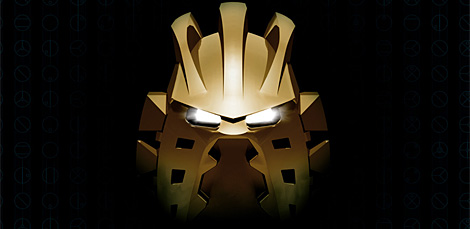I noticed a commercial for Lego’s “Bionicle” sets when my nephew was watching TV the other day, and it brought back memories of my own childhood obsession with them. It got me thinking about Bionicle’s introduction (in 2001, which seems like a long, long time ago now…), and just how well-done it was:
Commercials for kids’ toys follow pretty predictable patterns, so it’s interesting just how against the grain these were. Instead of hyper-kinetic editing and over the top narration, we’re presented with short, to-the-point vignettes showcasing the characters (not the products-the characters) being cool. No voice overs, no live action segments, no goofy music… Which, I think, really translates to “no condescension.”
First of all, there are no kids playing with the toys. This seems counter-intuitive until you remember the age group these things were aimed at. Older kids want to play with the cool elemental warrior toys because they’re cool elemental warriors, not because some cornball narrator screams “SWORD-SWINGING ACTIOOOOOOON” in their faces.
Older kids – particularly the older boys these were aimed at – don’t want to feel like little kids. They don’t want to be talked down to by advertising execs, they want to feel cool and grown up.
There’s more to it, though, a major factor being that the characters as portrayed in the commercials match up almost perfectly with the toys themselves. Unlike the then-current Transformers figures (which looked nothing like their cartoon counterparts), there was no “off-model” feel. The characters on the posters, packaging and flash movies on the website looked identical to the toys, right down to the gears and such.
Still, that doesn’t quite cover it. Advertising isn’t just a matter of what, but of when. The first time I saw these commercials was on cartoon network during the pilot episode of Samurai Jack. Lego had apparently worked out a deal with Cartoon Network for “limited commercial interruption,” meaning that not only were you seeing a cool new show for the first time, but there would be barely any commercials to interrupt it.
Think back to when you were a kid; was there anything more annoying than Dragonball Z being interrupted by someone trying to sell you car insurance that would be of exactly zero practical use for at least another six years? By buying up all the commercial time, Lego not only endeared themselves to the kids watching by sparing them the ads, they also forever associated themselves with the cool new show.
Without so much as a cartoon to tie into, these things sold like hotcakes for something like three years. What a coup.
So with all that in mind, let’s have a look at the more recent commercials:
Hey-if it ain’t broke, don’t fix it.

